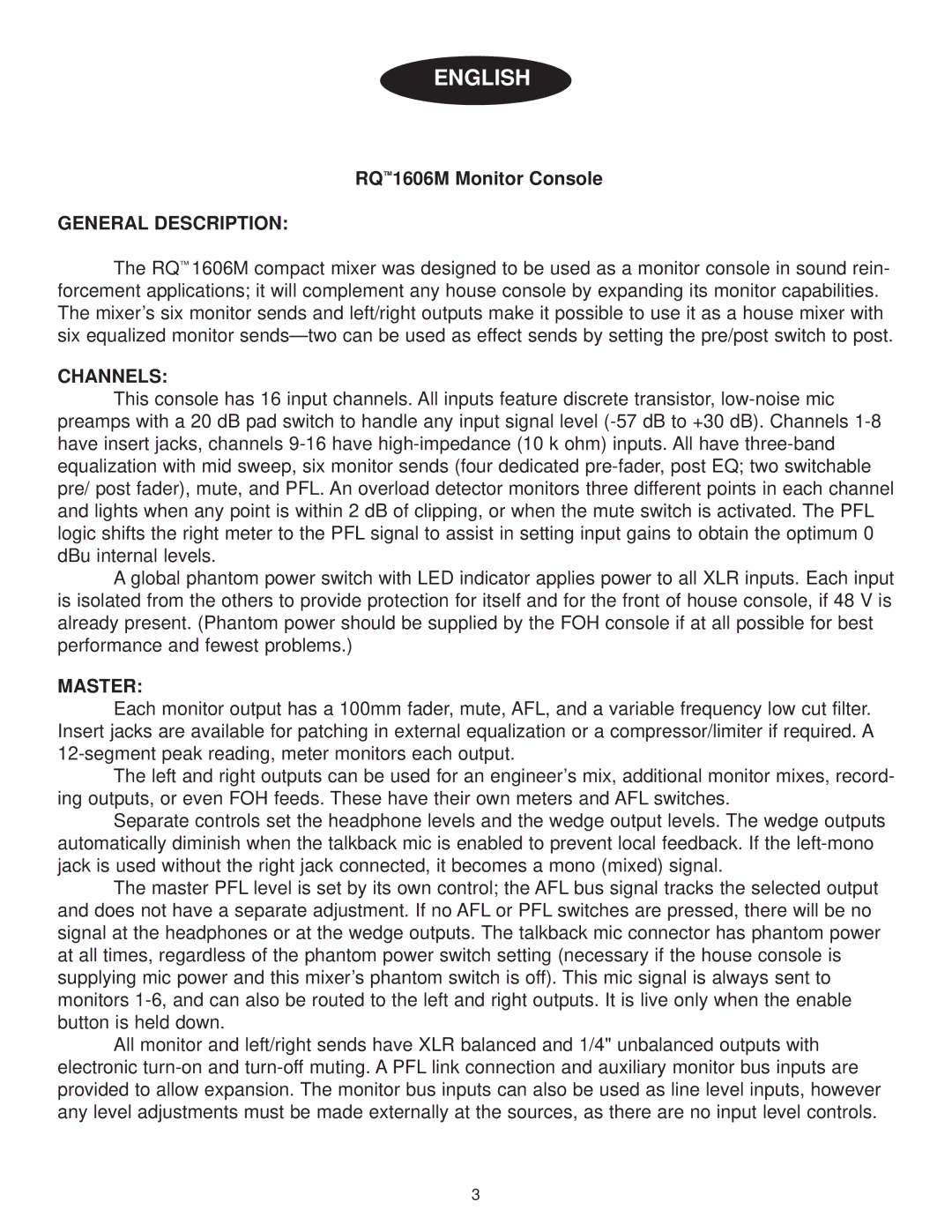ENGLISH
RQ™ 1606M Monitor Console
GENERAL DESCRIPTION:
The RQ™ 1606M compact mixer was designed to be used as a monitor console in sound rein- forcement applications; it will complement any house console by expanding its monitor capabilities. The mixer’s six monitor sends and left/right outputs make it possible to use it as a house mixer with six equalized monitor
CHANNELS:
This console has 16 input channels. All inputs feature discrete transistor,
A global phantom power switch with LED indicator applies power to all XLR inputs. Each input is isolated from the others to provide protection for itself and for the front of house console, if 48 V is already present. (Phantom power should be supplied by the FOH console if at all possible for best performance and fewest problems.)
MASTER:
Each monitor output has a 100mm fader, mute, AFL, and a variable frequency low cut filter. Insert jacks are available for patching in external equalization or a compressor/limiter if required. A
The left and right outputs can be used for an engineer’s mix, additional monitor mixes, record- ing outputs, or even FOH feeds. These have their own meters and AFL switches.
Separate controls set the headphone levels and the wedge output levels. The wedge outputs automatically diminish when the talkback mic is enabled to prevent local feedback. If the
The master PFL level is set by its own control; the AFL bus signal tracks the selected output and does not have a separate adjustment. If no AFL or PFL switches are pressed, there will be no signal at the headphones or at the wedge outputs. The talkback mic connector has phantom power at all times, regardless of the phantom power switch setting (necessary if the house console is supplying mic power and this mixer’s phantom switch is off). This mic signal is always sent to monitors
All monitor and left/right sends have XLR balanced and 1/4" unbalanced outputs with electronic
3
